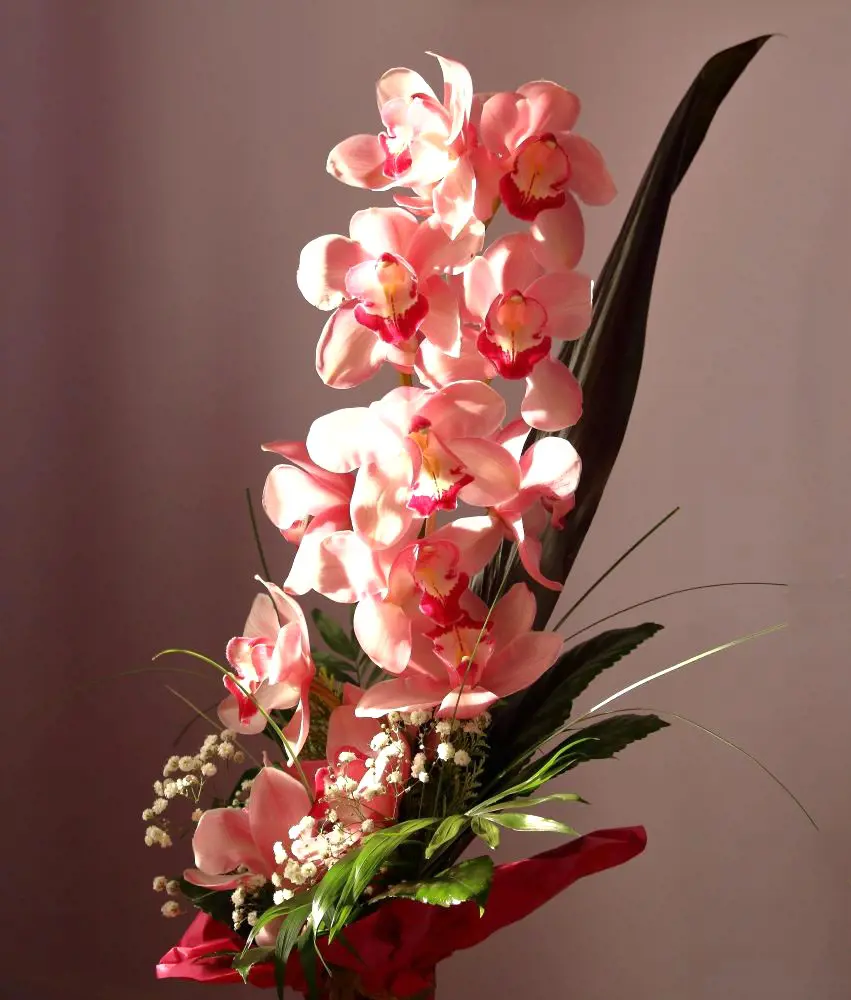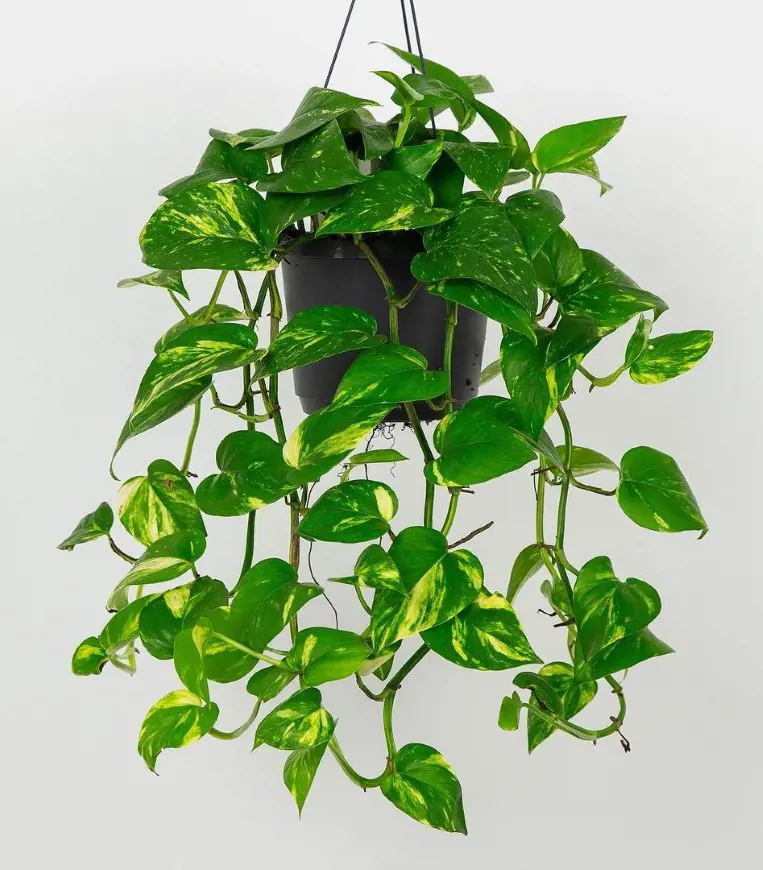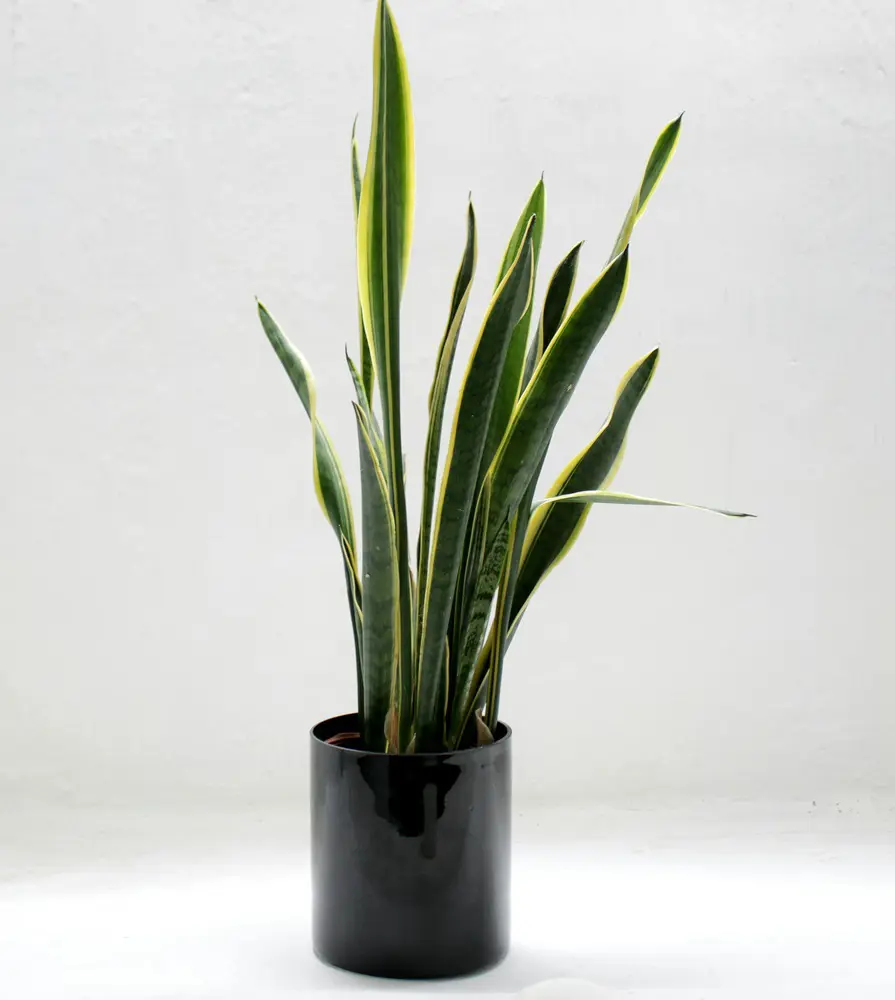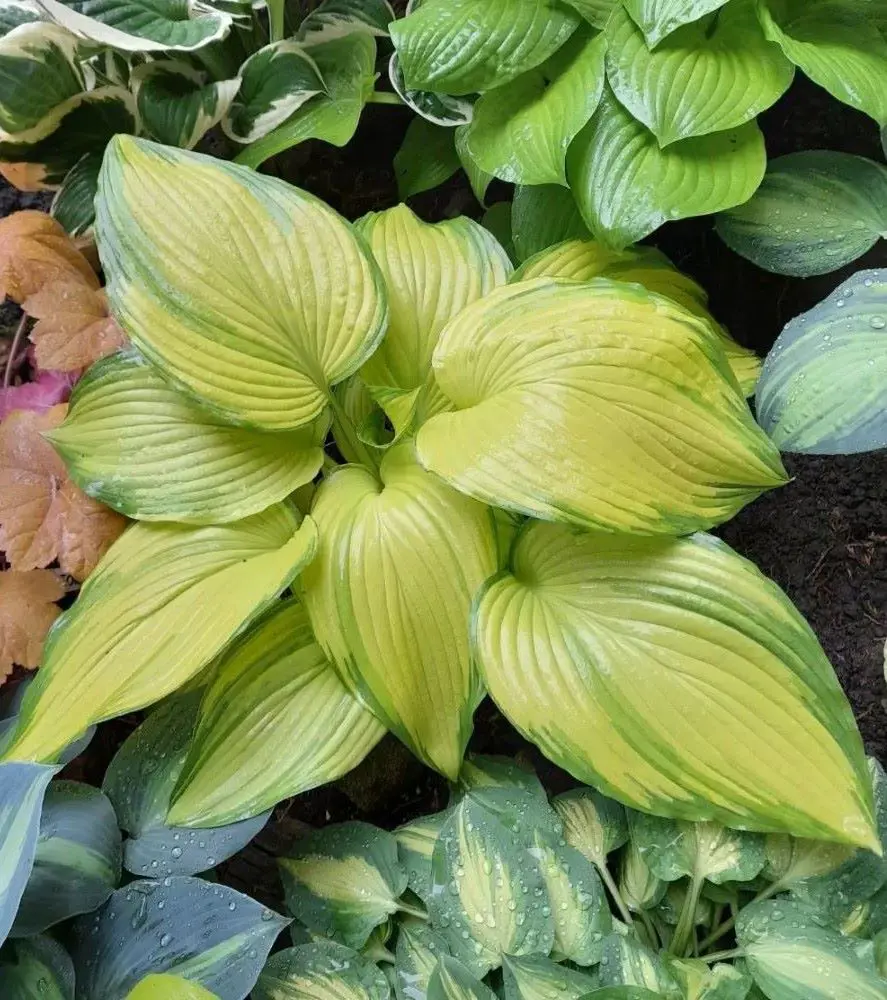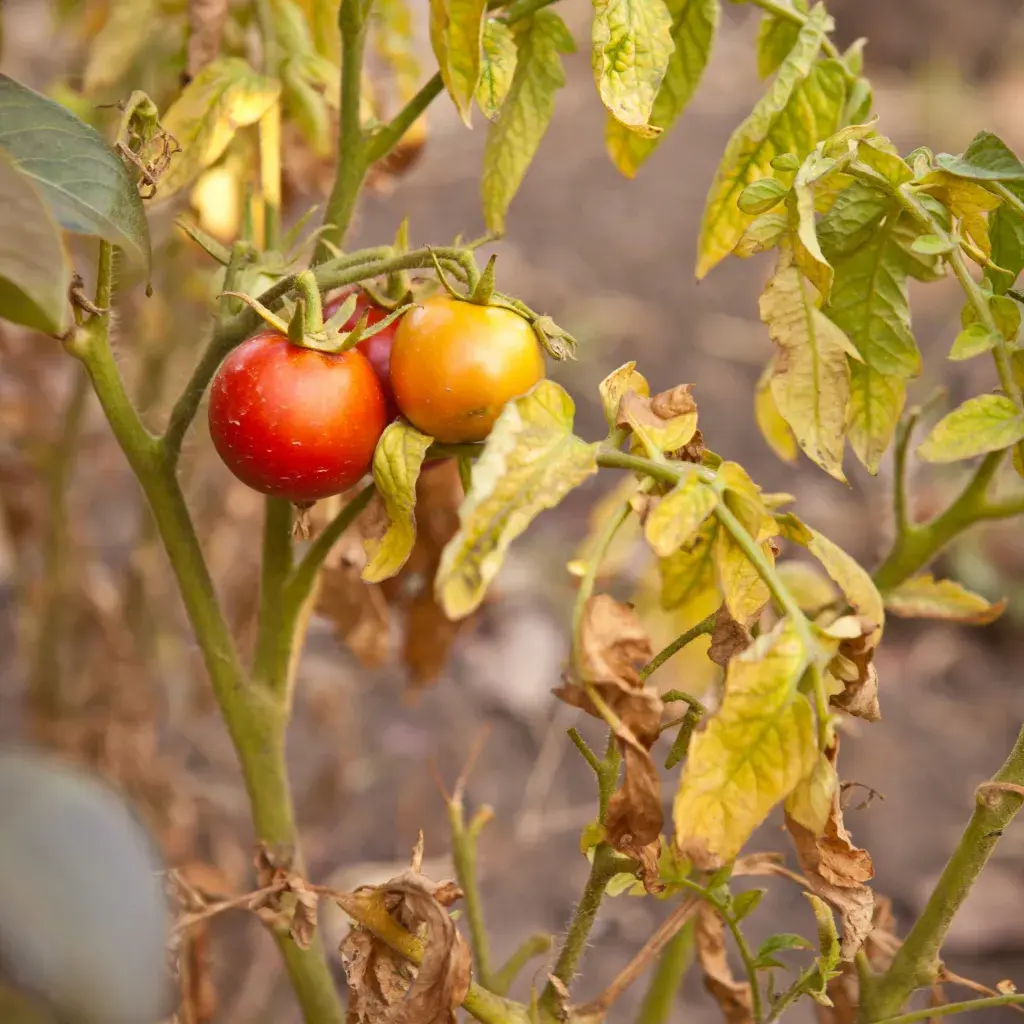How To Grow and Care For Peace Lily Plant
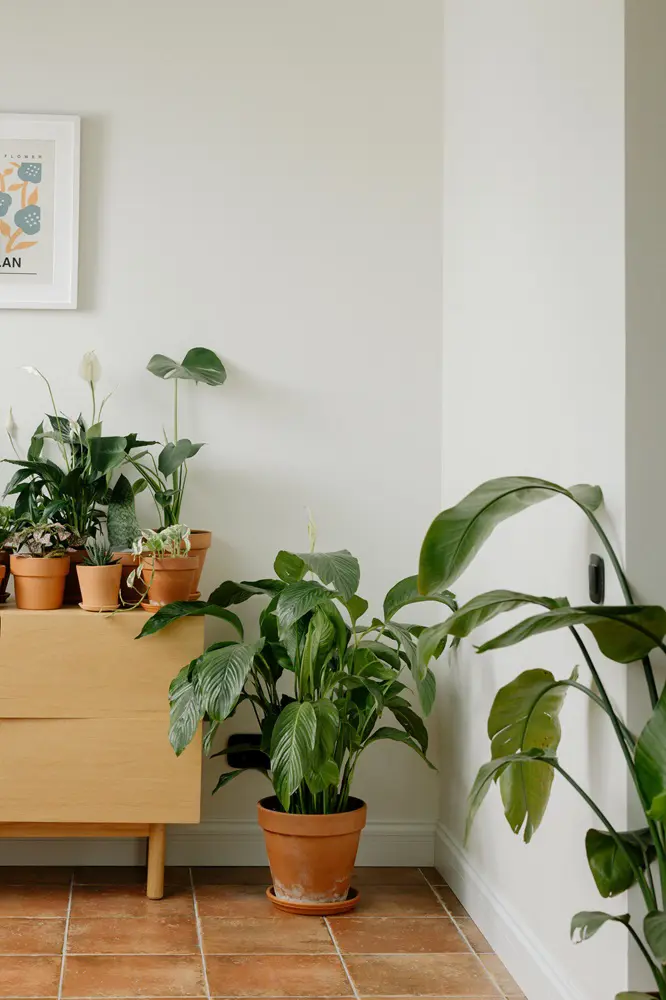
This post may contain affiliate links. If you make a purchase through links on our site, we may earn a commission.
The Peace Lily is an indoor plant that is most valued for its beautiful and shiny green leaves as well as the white blooms. Hard and tolerant, it’s naturally a low-maintenance addition to your plant collection. If you are confused, let us tell you that it is not part of the Lily family, indeed it is not a lily at all.
These plants prefer growing on the floor of the forest, with indirect sun exposure, humidity, and optimal moisture. Here in this article, we will accompany you on how to propagate and nurture this plant.
Peace Lily Overview
| Scientific Name | Spathiphyllum |
| Common Names | White Sails, Spathe Flower |
| Family | Araceae |
| Type | Perennial |
| Size | 1-3 Ft. Tall and Wide |
| Soil Type | Moist, Well-drained |
| Soil pH | Acidic |
| Bloom Time | Spring |
| Origin | Colombia, Venezuela |
What Is A Peace Lily?
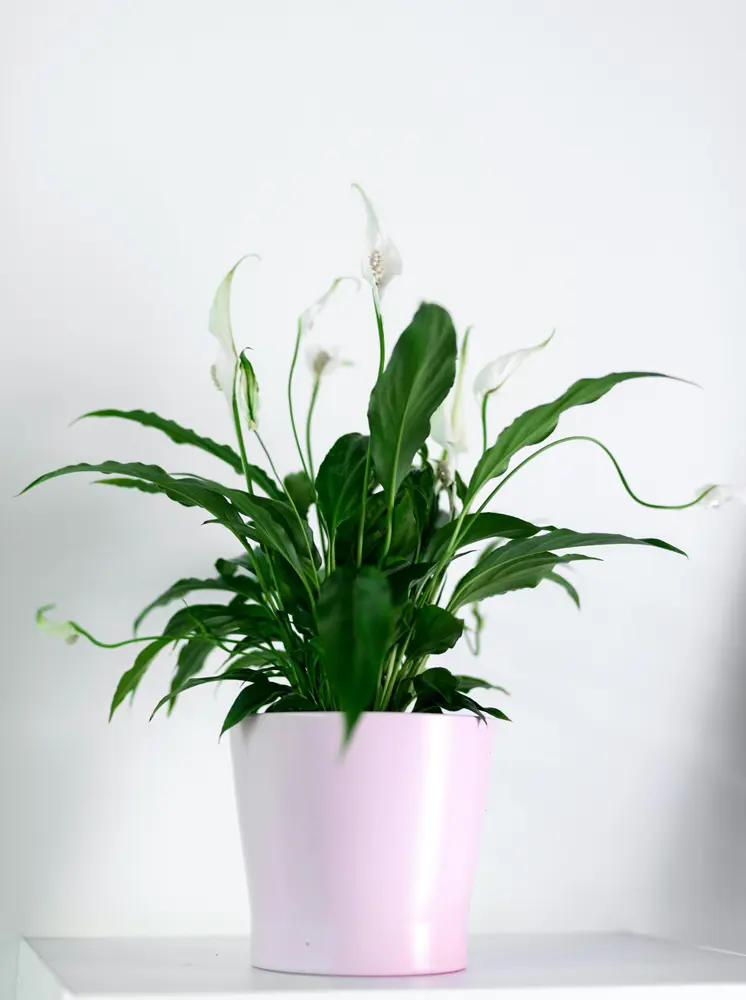
Spathiphyllum wallisii or Peace Lily is one of the low-light tolerant indoor plants that requires low maintenance and has identified aesthetic benefits including air purification. Boasting lustrous, lance-shaped, dark green leaves that are either arching or pendant, it has an ideal height of up to 16 inches and a spread of up to 18 inches.
Originating from Central and South America, the peace lilies are members of the Arum family of plants. They usually start blossoming during early spring and each flower has a longevity of at least four weeks. They are moderate growers with approximately a 3-year maturity period.
However, for precautionary measures, it is recommended that they be kept away from children as well as pets.
Peace Lily Care
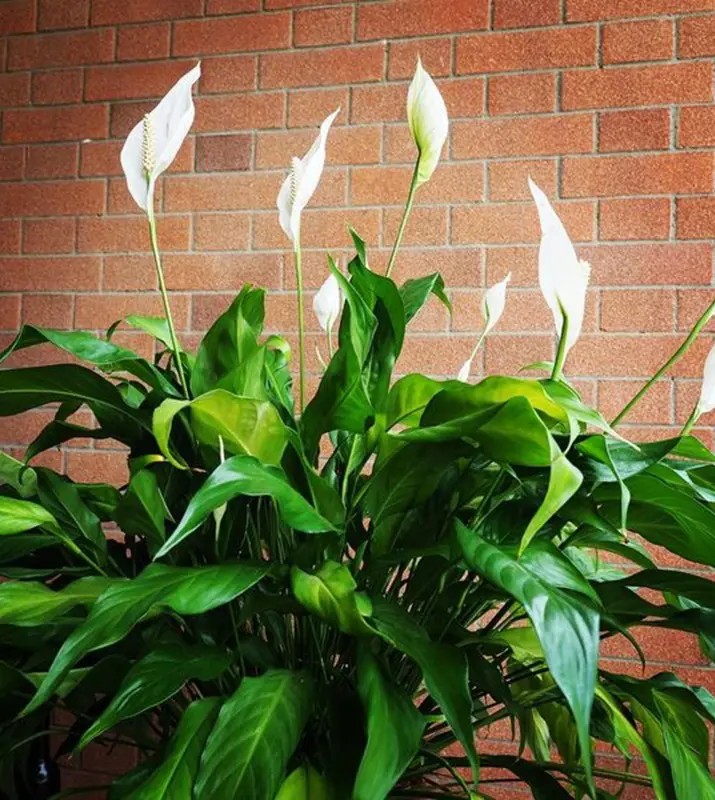
Caring for the Peace Lily consists of considering some factors, which are described below:
Light
From their growth requirement, it is clear that peace lilies prefer indirect but bright sunlight for their overall health. It is also important not to expose peace lilies to direct sunlight during the day as this may result in the browning of the leaves.
Select the most appropriate position with indirect light, for instance, the window that receives light from the east or the north.
Water
Water your plants frequently, but be cautious not to overwater the plants, let the soil feel slightly moist to the touch. The plant will slightly wilt when it requires water to give the owner a heads-up.
To maintain the moisture in the peace lily, it should be watered once a week with the leaves sprayed with water during summer. It is preferable to use filtered and lukewarm water due to the sensitivity of peace lilies to chemicals, especially fluoride, which is present in tap water.
Temperature
They bloom preferably at a temperature range of 65°F to 75°F during the day. During the night, one should keep the temperature a few degrees lower than during the day, preferably by 10 degrees.
One thing to avoid is cold temperatures coming from windows or doors. Temperature is important for their stability, and it should remain constant.
Humidity
What peace lilies like is high humidity. Spray your peace lily several times a day, and let the rainforest shower give its leathery skin joy. Put the pot in a tray of pebbles and water so that it can be like a miniature rainforest.
Soil
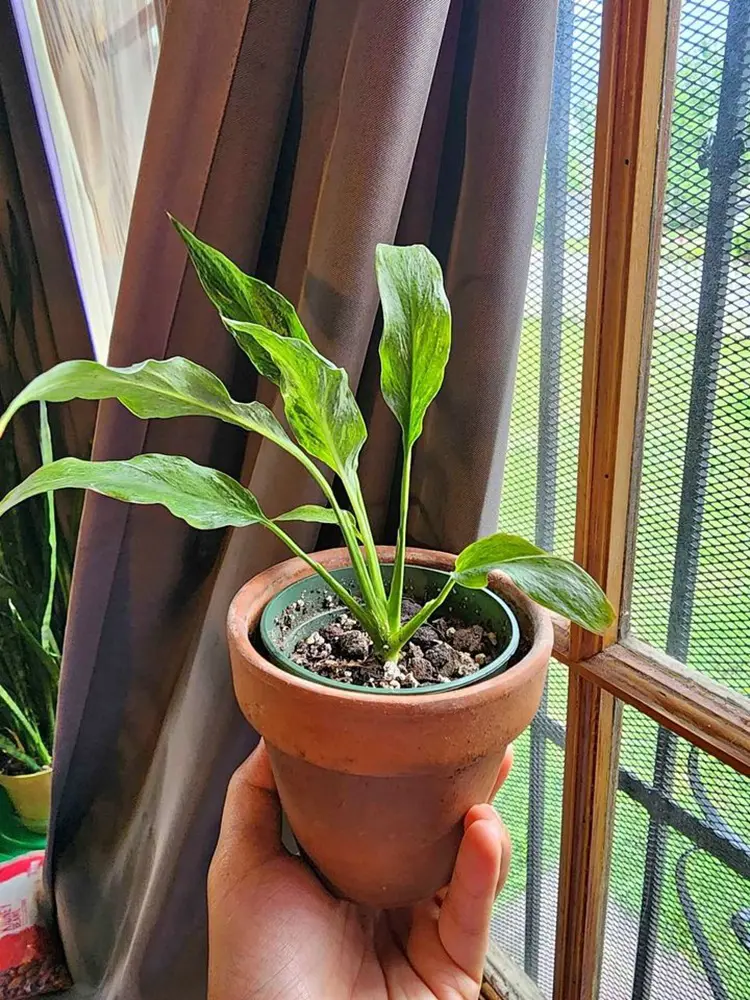
Peace lilies grow best in fertile, and light soil. Also, a well-draining mixture can be more appropriate for planting these plants since they cannot cope with very wet soil conditions.
Fertilization
For peace lilies, use an organic houseplant fertilizer or a half-strength liquid fertilizer. This solution works best when used every month, especially during the growing seasons of spring and summer.
Before applying the fertilizer to the plant, water the plant and use the recommended amount of fertilizer available in the pack.
Pruning
Trimming eliminates the unsightly withered and drooping leaves from the peace lily hence enhancing its appearance and presentation. Further, trimming is helpful in the promotion of new growth in the plant and in avoiding congestion in the plant.
The practice can also improve the spacing or proximity of the plant to the air and decrease the likelihood of diseases. Prune peace lilies as needed during the year by pinching off any dead or dying leaves.
Support
When the stems are long and start bending in the peace lily, it indicates that it requires support so that the plant stays firm.
Slowly insert stakes into the ground adjacent to the stems and then tie them loosely. Ensure that the roots are safe and sound in the process. This support helps the peace lily to become erect and robust.
Repotting Peace Lily
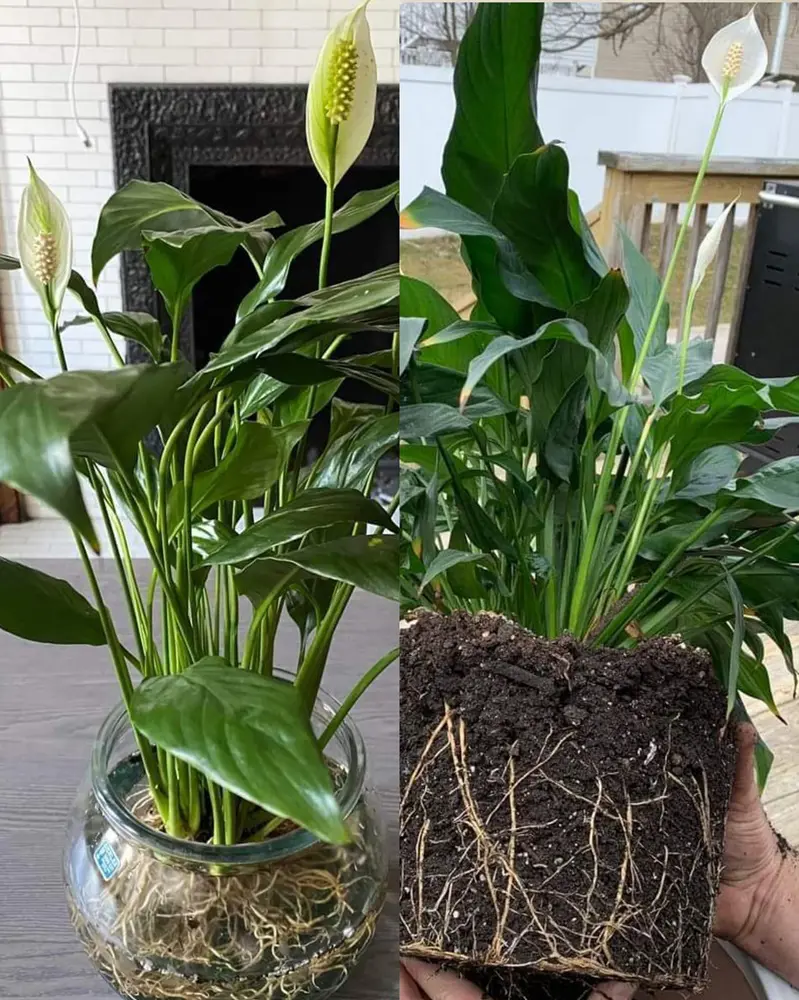
This step-by-step guide will help you understand the repotting process of the Peace Lily:
- Collect a new container with drainage holes and fresh soil, gardening gloves and the pruning shears.
- Transplanting during the growing period when the plant is actively growing mostly coincides with spring or early summer.
- Fill the new pot with fresh potting mix to the recommended level leaving a little space for the root ball of the Peace Lily.
- Slowly transplant the Peace Lily out of the current container while ensuring that the base of the plant is adequately supported.
- Scan the roots for any manifestations of rot or overcrowding. Prune the roots with clean scissors to remove old or softened portions.
- If the plant has outgrown the pot, then it can be divided and transplanted into different pots with each containing healthy roots and foliage.
- Carefully transplant the Peace Lily into the new pot while ensuring the soil line is at the same level as the top of the root ball but slightly below the rim of the pot.
- Pile more potting mix at the edges of the root mass in a manner that will anchor the plant.
- Following transplanting, it is advisable to water the peace lily well which will help the soil to settle and moisten the roots.
- Reposition the repotted peace lily in a bright, indirect light area, and resume typical care, such as watering and feeding if appropriate.
Peace Lily Types
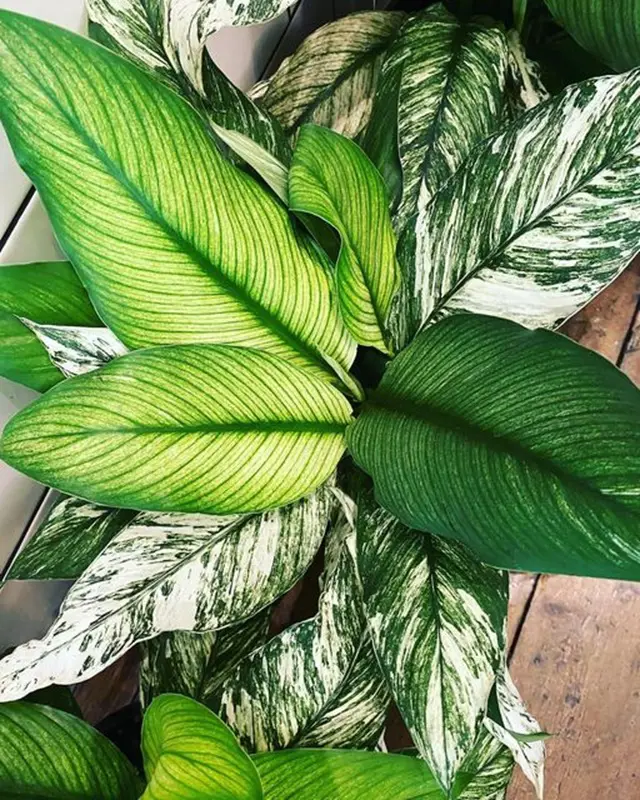
Since peace lilies undergo heavy hybridization, they come with over 100 types. These varieties can range from miniature to large and can have a variety of leaf colors, including variegated, chartreuse, or blue-green.
Some of the popular types of peace lilies are as follows:
- Sensation Peace Lily: Known for its large size, this plant is capable of growing up to 6 feet in height.
- Golden Delicious Peace Lily: This variety of peace lilies constitutes a stunning golden-green color.
- Patricia Peace Lily: Featuring deep green foliage and elegant white blooms, this offers a classic and timeless appearance.
- Sonia Peace Lily: Recognized for its abundant flowers and compact growth habit, it has been a popular choice for indoor settings.
Challenges And Issues With Peace Lily
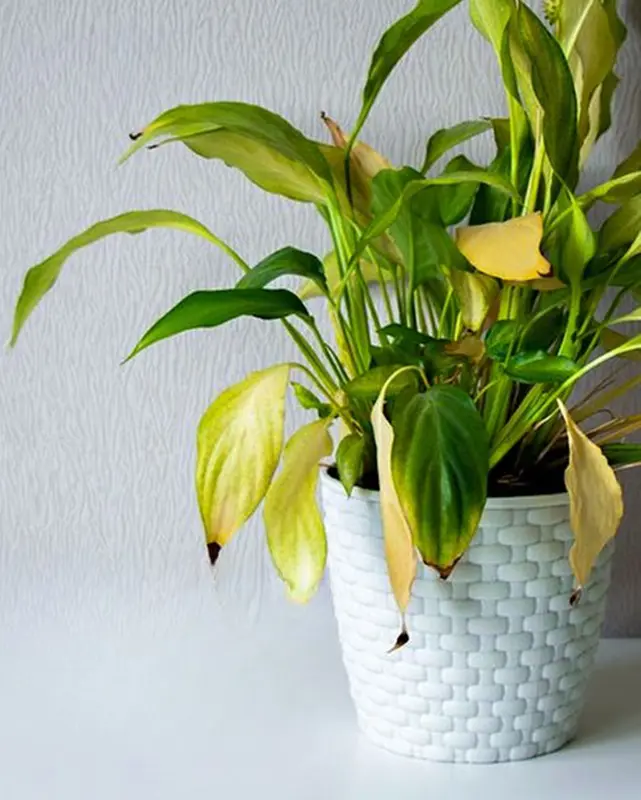
Like most houseplants, the Peace Lily is susceptible to some common issues and challenges. However, these issues can be solved with proper care and grooming of the plant.
Yellowing Leaves
Many reasons such as over-watering, underwatering and drainage problems cause peace lily leaves to turn yellow and droop.
Use a proper drainage system, and water the plant occasionally. Do not make a practice of using tap water to water the plant.
Browning Leaves Or Leaf Tip
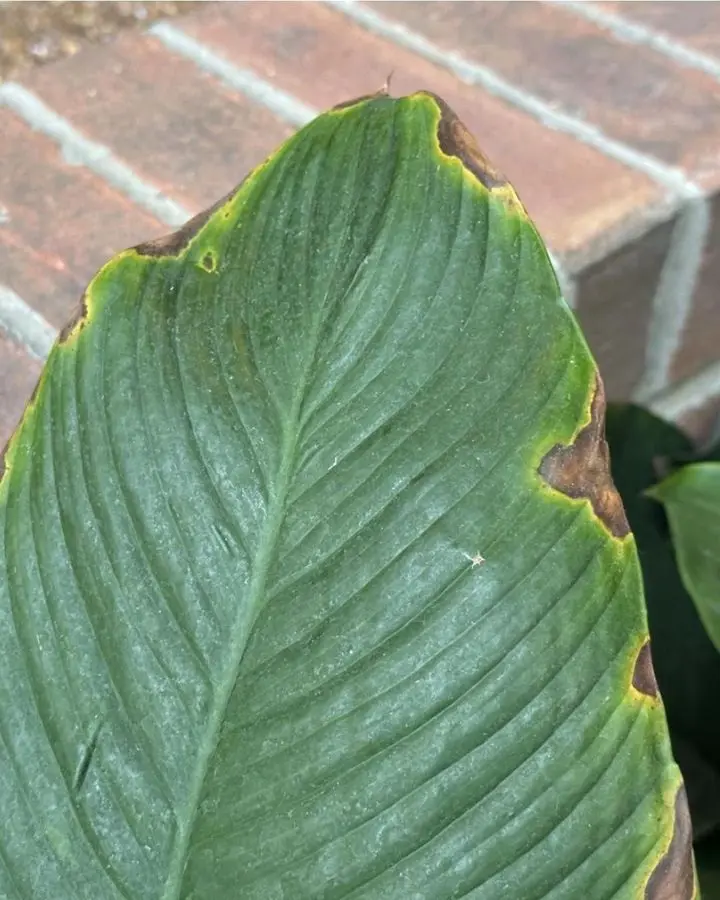
Late blight happens when the plants are exposed to direct sunlight, have been over-fertilized, are over-watered or under-watered, and have low humidity, and poor aeration.
Relocate the plant from the direct sun, maintain the watering frequency and use a balanced fertilizer to reduce the chances of the tips of the plant turning brown.
Curling Leaves
Curled leaves usually suggest that the plant is exposed to too much light.
Hence, it is suggested to transfer these plants to a place where there is less amount of sunlight.
Failure To Bloom
Sometimes, flowers in this plant may fail to bloom due to insufficient light or lack of proper care being accorded to the plant.
To avoid this, ensure that the plant is provided with very consistent ideal conditions.
Pest Infestation
Keep peace lily free of pests such as scale and mealybugs as these are some of the problems that affect the health of the plant.
Remove and control the pests by washing the plant with insecticidal soap or neem oil and monitoring for any signs of pests.
Recent posts
Plant Care
Plant Care
How To Take Care Of An Orchid Plant? 11 Tips And Tricks
If you love gorgeous orchids but are worried they're too high-maintenance, don't worry. This guide is like a cheat sheet for orchid newbies. Forget fancy words and confusing schedules — we're talking about how to take care of an orchid pla...
Plant Care
Pothos Plant Care And Growing Guide
Adding a Pothos plant (Devil’s Ivy) to your home benefits the environment and aesthetic of your personal space. It's easy to maintain and is loved for it's ability to enhance indoor air quality by removing toxins like formaldehyde, benzene, and...
Plant Care
Snake Plant Care and Growing Guide
Snake plants require low maintenance, and low light and are almost impossible to kill, making them a perfect plant for beginners and seasoned gardeners. In this guide, we will explore essential care tips and optimal growing conditions for snake plant...
Plant Care
How To Plant, Grow and Care Majesty Palm
The majestic palm, scientifically known as Ravenea rivularis, makes for a stunning indoor tree with its lush and grand fronds. Originating from Madagascar's river banks, this resilient houseplant is cherished not only for its beauty but also for its ...
Plant Care
How To Grow And Care For A Hosta Plant
Hosta plants are widespread perennials, often grown for their beautiful and diverse foliage. They are extremely easy to care for and can thrive in various conditions, particularly shade or semi-shade. These hardy plants can last for many years and re...
Plant Care
Reasons Why Tomato Leaves Are Turning Yellow
If your tomato leaves are turning yellow, it's a cause for concern when you've put effort into growing them for that homegrown, delicious taste. The yellowing could result from various issues affecting your kitchen garden aspirations. Our guide simpl...
